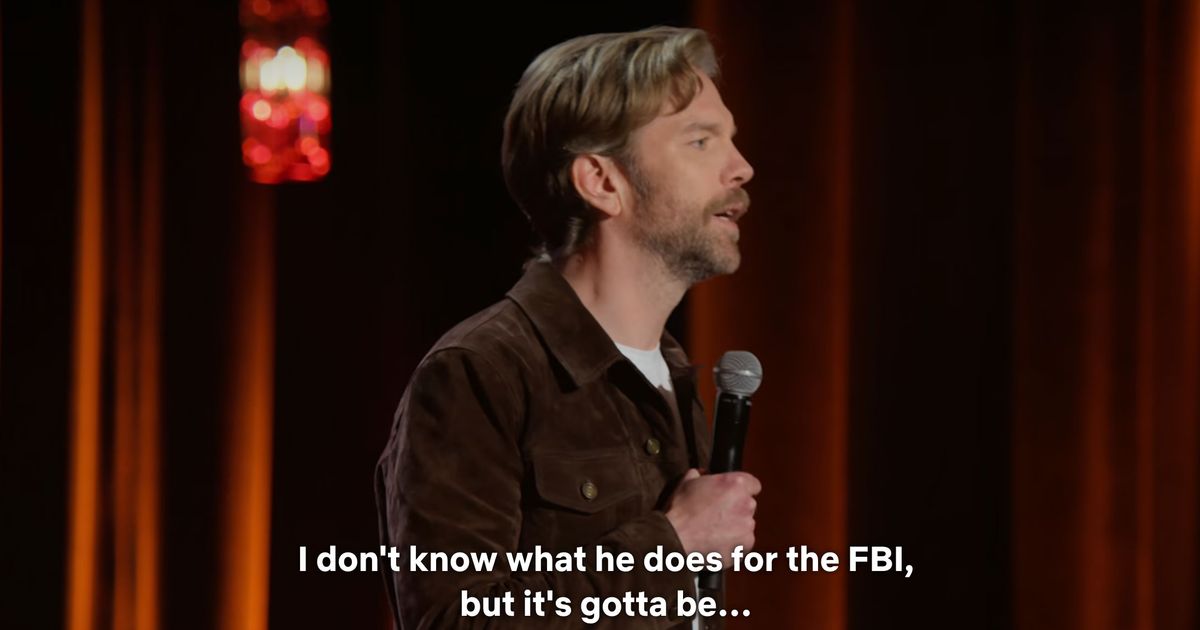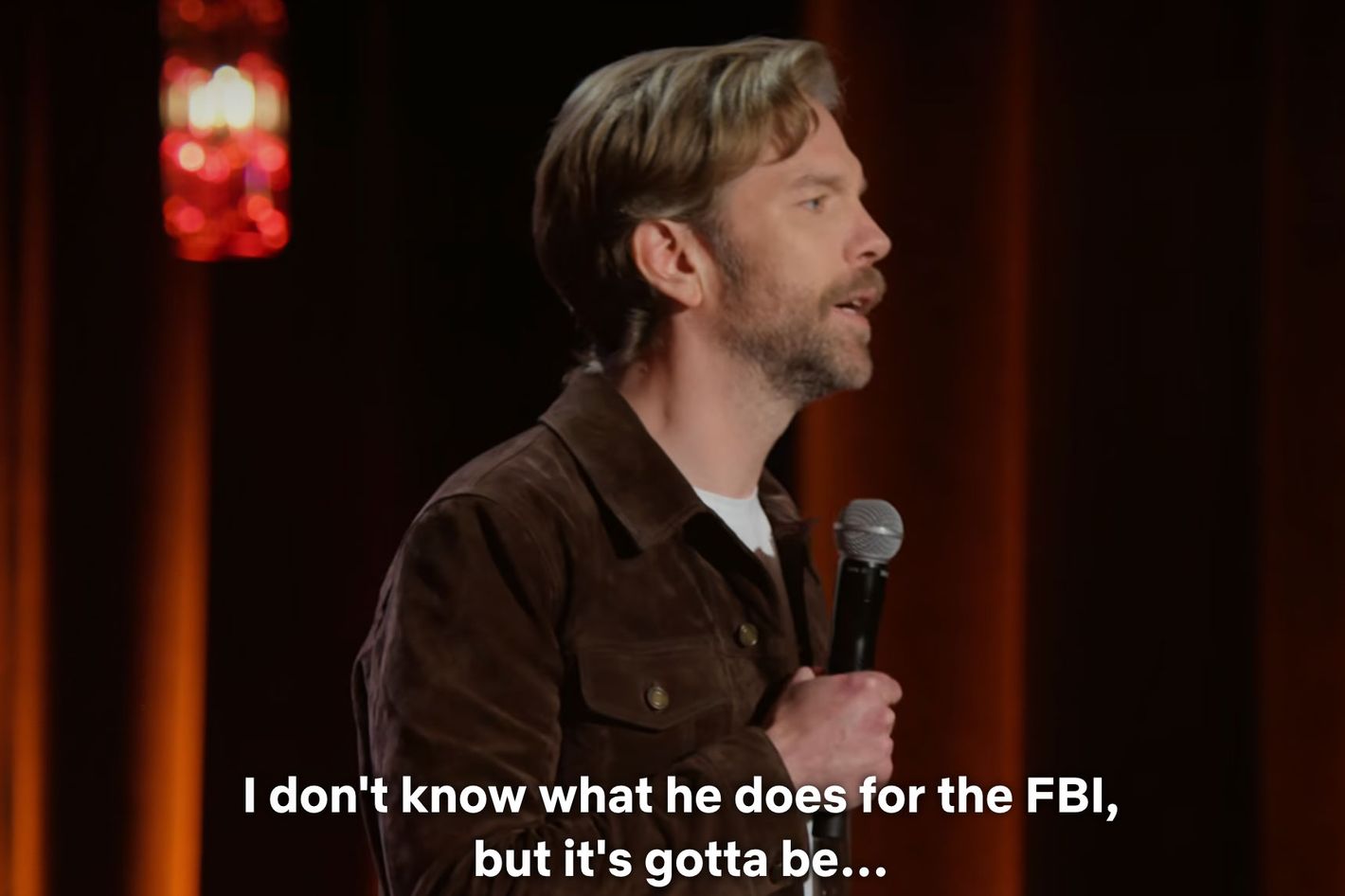Turn Off the Captions on Stand-up Specials (If You Can)
If you’re not laughing while watching stand-up specials, it might be because you’re reading ahead.


There’s a great joke in Anthony Jeselnik’s new Netflix special, Bones and All, that was recently clipped and posted to X. “I have a friend who works for the FBI,” he says. “He pretends to be a 12-year-old girl, goes on the internet, and chats with child molesters all day. I don’t know what he does for the FBI, but …” It’s a quintessential Jeselnik joke in that it relies on precise timing and the element of surprise to work. On X, where it was posted with captions, it had the benefit of neither. Acting on reflex while watching it, I read ahead of Jeselnik’s delivery, rendering each pause less weighty and spoiling the joke’s eventual twist. If this had been the first time I’d seen it, it wouldn’t have made me laugh.
What it’s like working for the FBI
???? Anthony Jeselnik: Bones and All is now playing only on Netflix pic.twitter.com/LYETMnhXIF— Netflix Is A Joke (@NetflixIsAJoke) December 4, 2024
On platforms like TikTok and Instagram, where comedians post clips to grow their following, captions have become the norm because they spur discoverability, engagement, and accessibility — even though comedians are aware that their material plays worse as a result. In cases where comedians on social media are concerned about accessibility, it’s a worthy trade-off, but the motivations aren’t always so selfless. In 2019, comedian Moses Storm mocked stand-ups who pander to algorithms in a Comedy Central set. “Leave some room for some embarrassing subtitles,” he instructs the camera operator framing the shot. “Because nothing’s funnier than reading a joke.”
This phenomenon exists off of social media as well, where people watch stand-up with captions for the mere reason that they watch everything with captions. A 2022 survey by YPulse put the number at 59 percent of Gen-Zers and 52 percent of millennials, and reports suggest that this number is growing. With respect to movies and TV, viewers’ increased preference for captions might be attributed to the fact that dialogue is harder to hear than it once was largely thanks to a growing disconnect between the way audio is mixed in studios and the equipment being used by viewers at home. But in professionally produced stand-up specials, audibility is rarely a problem, so I would like to make a humble recommendation: Unless you rely on captions for accessibility reasons, the next time you sit down to watch a stand-up special, remember to toggle them off.
Watching stand-up at home tends to be underwhelming compared to attending a live show. Bo Burnham aptly summed up this disparity in his 2016 special, Make Happy, when he sang, “If you watched this thing alone, you probably didn’t laugh, but maybe a few times you exhaled out of your nose.” Watching stand-up with captions only serves to widen this gap. By undercutting a comedian’s carefully calibrated timing and delivery, even if only by milliseconds at a time, captions weaken the impact of even the best-written jokes. We don’t have a say in what the algorithm dictates stand-up should look like on Instagram or TikTok, but we do have some choice when we open up Netflix or Max. In fact, these streamers could enhance the success of their stand-up libraries overnight simply by implementing one quick new feature. Whenever a viewer with captions on clicks to watch a stand-up special, the platform should warn them like an email client warning a sender of a missing attachment: “You are watching a stand-up special with captions on,” it should say. “Are you sure you want to watch to exhale out of your nose rather than laugh?”
Related








